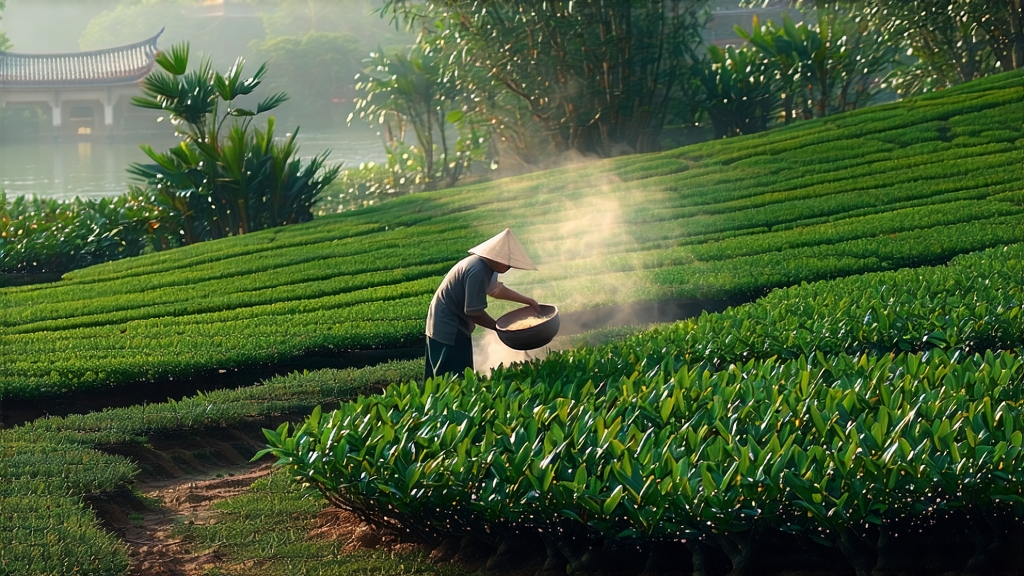
Longjing, often spelled Lung Ching in older Western texts, is the single green tea whose name even casual drinkers worldwide recognize. Yet behind the familiar jade-colored liquor lies a layered story of imperial patronage, micro-climate, hand craftsmanship, and a flavor that Chinese poets describe as “the first breath of April.” This article invites international tea lovers to move beyond the supermarket tin and discover why Longjing is considered the benchmark of Chinese green teas.
-
Historical roots
The earliest written record appears in the Tang Dynasty Lü Yu’s Classic of Tea (760 CE), which mentions “a tea from Longjing village, Hangzhou, sweet and clear.” By the late Ming dynasty, Buddhist monks at Longjing’s Shifeng Peak were already pan-firing leaves to stop oxidation, a technique that distinguishes green from oolong or black tea. When the Qianlong Emperor visited West Lake in 1762 he allegedly plucked leaves himself at the Hugong Temple and presented the 18 imperial bushes to his mother; those same plants still draw selfie-snapping tourists today. Imperial favor turned a regional curiosity into a tribute tea, shipped north on the Grand Canal in small bamboo caskets sealed with lotus leaves. -
Micro-terroir: why West Lake matters
Chinese connoisseurs insist that true Longjing can come from only 168 square kilometers of protected West Lake geography. The lake’s large water mass moderates temperature, while morning mist filters UV light, encouraging slow growth and higher amino acids—especially L-theanine, which delivers the tea’s hallmark sweetness. Granitic soils drain quickly, forcing bushes to send roots deep for minerals. Within the zone, the micro-locations are ranked like Burgundy crus: Shifeng (Lion Peak) tops the list, followed by Meijiawu, Wengjiashan, and Longjing village itself. Leaves picked above 300 m elevation, where nights remain cool, develop the prized “chestnut and orchid” aroma impossible to replicate in flatland plantations of Zhejiang or the neighboring provinces now churning out “Zhejiang Longjing.” -
Cultivars and styles
The original clone is Qunti (群体种, “population bush”), a seed-propagated landrace with small, oval leaves and low yield but intense complexity. In the 1980s researchers released Wuniuzao (乌牛早), an early-sprouting variety that allows farmers to market “pre-Qingming” tea two weeks ahead of traditional timing. More recently, Longjing #43, a vegetative clone, has gained ground for its tidy, uniform leaves and bright green color that photographs well on e-commerce sites. Purists argue that only Qunti delivers the layered aftertaste called houyun (lingering throat rhyme), yet #43 now accounts for 70 % of West Lake gardens because it is easier to machine-harvest. A third style, Bai Longjing, uses albino tea leaves that emerge nearly yellow; the lower chlorophyll yields a creamier liquor reminiscent of white tea, but it is still pan-fired like classic Longjing. -
The craft of pan-firing
Longjing’s soul lies in the hot wok. Within minutes of picking, leaves are spread on bamboo trays to wither for two hours, reducing surface moisture to 65 %. Master fryers then heat a cast-iron wok to 280 °C, rubbing a thin layer of tea oil to season the surface. Using only bare hands and a straw brush, they perform ten distinct hand motions—grasp, shake, rub, press, toss, buckle, fling, straighten, pile, and smooth—over 25 minutes. Temperature is lowered in three stages, ending at 80 °C, so that leaves lose 30 % of weight yet retain 5 % moisture, enough to bend without breaking. A skilled worker can finish only 250 g per hour; the gesture is so taxing that city-born apprentices often quit after one morning. The result is a flat, sword-shaped leaf with microscopic hairs pressed flat, giving the tea its jade sheen and ensuring even extraction in the cup. -
Grading by season and leaf size
Chinese buyers obsess over picking date. Pre-Qingming (before 5 April) tea, picked when nights still dip to 8 °C, offers the highest concentration of soluble sugars and the lowest catechin bitterness. One bud plus half-open leaf is the gold standard; 50 000 such sets yield just